Lockdown Breakout (2 - Madain Saleh / Hegra)
(Continued from part 1)
After the Elephant Rock we visited a viewpoint which the receptionist at our hotel had recommended. This was reached by a winding precipitous road, again with no signs to suggest that it was even there. This is shown on Google Maps as King Abdulaziz Park and is a parking space beside the local radio transmitter some 1,500 feet above Al Ula town with a landscaped area for sitting and walking around. But the views were spectacular, and we stayed there for almost an hour until sunset. The following photos were taken from this viewpoint.



We returned to the hotel for dinner, and ended up sharing a table with a lady who said she was going to visit the Hegra site the following morning. We advised her that it was closed until October, and related our experience at the gate there. However our new friend said that she was visiting as part of a private tour which had been arranged in cooperation with the Ministry of Tourism, and then invited us to join them for the visit. We didn’t need asking twice!
So the next
morning we met the remainder of the tour group and also the official guide, a
knowledgeable and charming lady called Anwar, at the hotel car park at 5.45am
and set off in a convoy of 6 cars. We were waved through the gates where we had
been refused entry the previous day, and went into the site. As a WH site there
should be all sorts of visitor aids to allow the story of the location to be
fully extolled. But I am pleased to report that such things were almost completely
absent, and were I to have gone as a regular paying tourist, I would have been
able to download an app onto my phone and as I went around I could have
received interactive histories and pictures of reenactments of the Nabatean
people living there. Whilst they were tent-dwellers and also had some
rudimentary houses built in the valley, these disappeared over time after their
civilisation passed. But what remains are their burial chambers, and these
consist of hollowed-out chambers in the sandstone outcrops, and are faced with
ornate porticos which have various symbolism to assist the deceased with their
journey on to heaven. There are also petroglyphs carved into the rocks and
Anwar was able to interpret these for us.
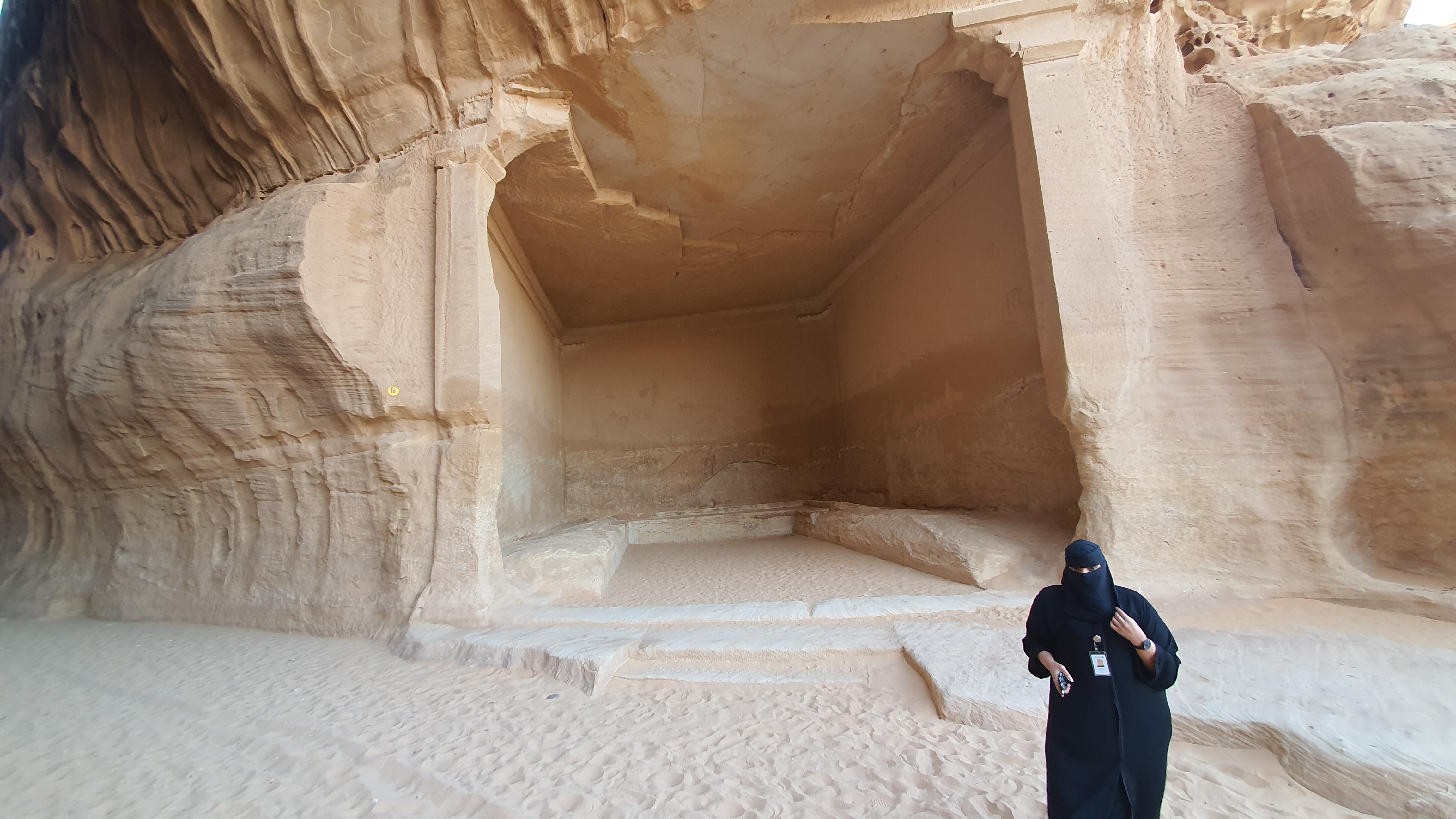 The
following article, published in The Arab Weekly in 2015 shows an interesting
perspective on the Saudis’ attitude towards this pre-Islamic site.
The
following article, published in The Arab Weekly in 2015 shows an interesting
perspective on the Saudis’ attitude towards this pre-Islamic site.
If you stood
silent among the Nabataean tombs and monuments at Madain Saleh in Saudi Arabia
long after dusk you might hear a baby camel’s faint keening for its mother. The
people of Thamud, like spiteful children disobeying their father, slaughtered
the she-camel, which had been created as a miracle of God, and the calf escaped
into the mountains.
Today, according to legend, the calf haunts Madain Saleh,
about 400 kilometres north of Medina. God cursed the area to destroy the
Thamuds for their cruelty and idol worshipping.
Whether one is superstitious and believes in ghosts is
irrelevant. The wailing often heard could be the wind whistling through nearby
mountain passages and the tombs carved in rock. But in many ways Madain Saleh,
which was named a UNESCO World Heritage Site in 2008, is indeed cursed if one
chooses a broad interpretation of what became of the site after its people
disappeared. It was neglected for centuries, and despite efforts by the Saudi
government to promote it as a tourist attraction, Saudis have largely ignored
its significance.
Madain Saleh is Saudi Arabia’s pre-eminent pre-Islamic
archaeological site dating to the Nabataean kingdom in the first century. The
Thamuds’ presence is dated to at least 715BC. Madain Saleh literally means
“Cities of Saleh” after the pre-Islamic Prophet Saleh. Madain Saleh is a
necropolis of 131 Nabataean tombs cut into massive rocks spread over 21 square
kilometres. It was the southern settlement of the Nabataean people, whose
capital was in Petra, Jordan.
The area where the Thamud people once lived is one of area’s
most important archaeological sites. Saleh was the prophet of the Thamud
people who built their homes into the cliffs of the area. They were arrogant
and corrupt. They lived long but also worshipped idols carved from stone,
refusing to listen to Saleh’s message that there was only one God. When
villagers demanded a miracle to prove that an invisible god existed, Saleh
obliged, and God created a pregnant she-camel rising out of a large rock and
giving birth to a calf. The Thamud people were in awe of the miracle.
A great stone tub was built and filled with milk from the
she-camel. Saleh permitted the villagers to share water from a well with the
camel by drinking from it on alternating days. But the villagers refused to
allow the camel and her calf to drink from the well or to graze. The villagers
killed the mother and the calf escaped. God ordered Saleh to leave the region
and then shook the villagers’ land with a massive earthquake and lightning. The
disobedient villagers perished in the disaster.
Today the area is the top Saudi Arabian tourist site for
expatriates, drawing thousands of visitors each year. But to say that Saudis
avoid the area due to superstitions ignores the generational shift in attitudes
and religious and cultural history.
“Muslims usually go to places that are blessed,” said Abdullah
Salama, 41, a former Medina resident living in Jeddah and who never visited
Madain Saleh. “There is no reason for anyone to go to a place that was cursed.”
For many years a fatwa issued by the Council for Senior
Ulema, Saudi Arabia’s highest religious authority, prohibited visiting the area
based on a hadith in which the Prophet Mohammad taught Muslims to avoid places
subjected to God’s wrath.
According to the hadith, when the Prophet passed by Madain
Saleh on his way to Tabuk, he said: “Don’t pass through the dwelling place of
those who wronged themselves without crying.” The crying refers to the regret
of sins in denying or violating God’s messages. Mohammad ordered that his followers
throw away the food they got from that area and spill the water because the
site was cursed.
The fatwa has since been lifted. Over the past decade, US,
French and German archaeologists have scoured the region to uncover its
history. The Saudi Commission for Tourism and Antiquities has been urging
Saudis to visit the site as a means for the poor to earn a living from tourism
and to instil pride in Saudi Arabia’s history.
Yarob H. Al-Ali, an archaeology manager for the commission,
said that sites such as Madain Saleh provide jobs but equally important is
introducing Saudis to their long-neglected history.
“It’s a long commitment to bring the region’s history out
into the open,” he said.
While the commission is targeting all Saudis in its
awareness campaign, its biggest challenge may be convincing the younger generation
of Madain Saleh’s value as an historic site. Some younger Saudis are not
avoiding the area because it’s cursed but because decades of neglect have
rendered its history meaningless to them.
“Madain Saleh is a place to drive by on the way to another
city,” said Manal al-Attiah, 38, a second-generation Medinan. “The fact that
it’s cursed doesn’t bother me. Its pre-Islamic history doesn’t bother me either.
But the government has done such a bad job of promoting it and the
infrastructure is so poor, I just don’t have a desire to go.”
Akram Alyeenbawi, 21, of Medina, agreed: “How can I appreciate
the history of something that I have never been taught in school?”
Attiah complained there are no rest stops, restaurants or
adequate accommodations in the immediate area. The Prophet’s admonition not to
drink or eat at the site is likely the reason why there are no conveniences.
However, Attiah said Madain Saleh is devoid of infrastructure
that would make a visit comfortable and interesting. “It’s not a place
I think about,” she said.
But regardless of the history and the politics of the site, Elaine and I had the most marvellous and informed visit, and with our tiny private group tour of 16 people we felt immensely privileged to have spent a couple of hours wandering around the site. If you ever have the opportunity to visit Madain Saleh / Hegra, I thoroughly commend it.
Again here are a few more pictures from our visit.
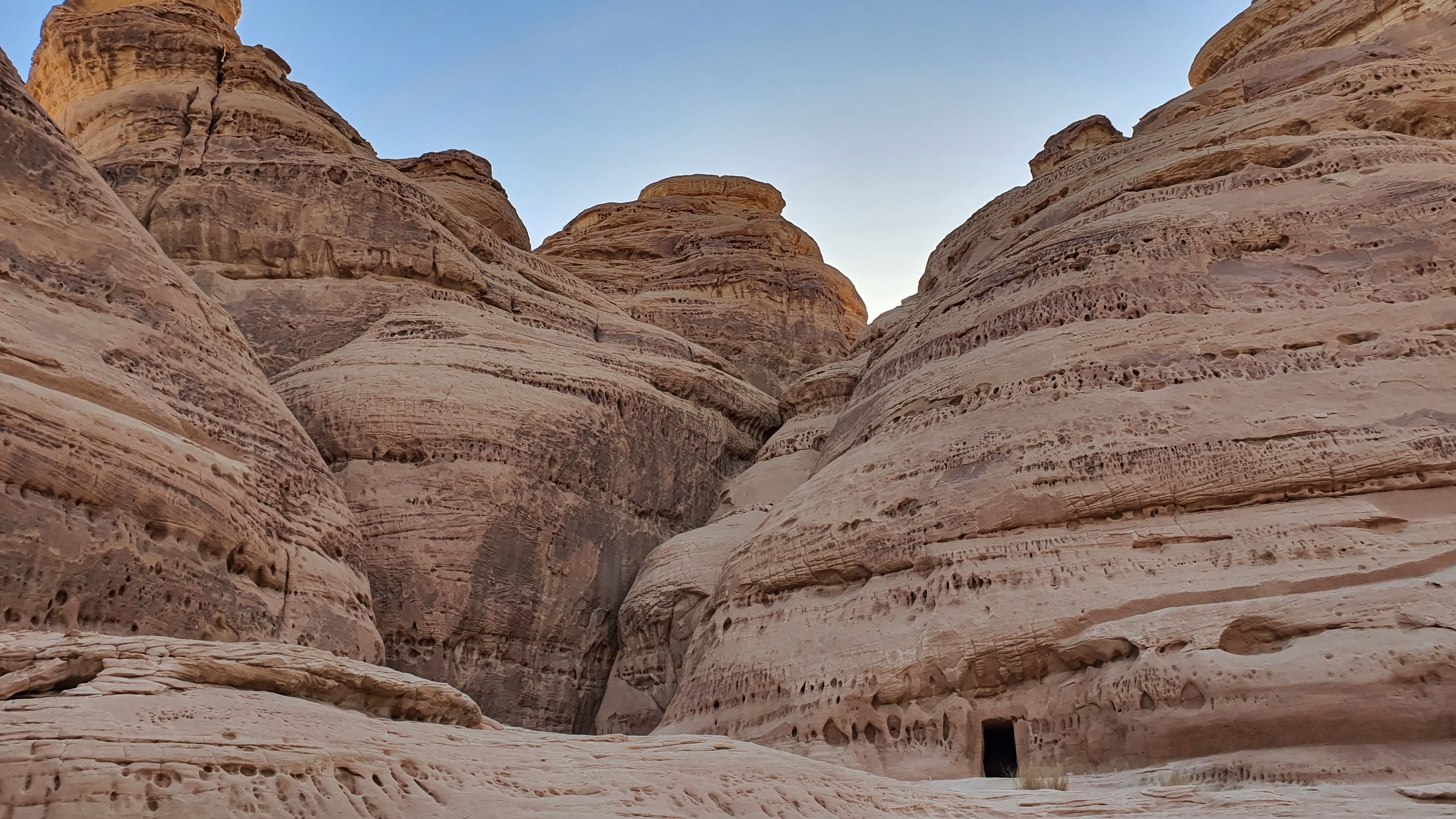
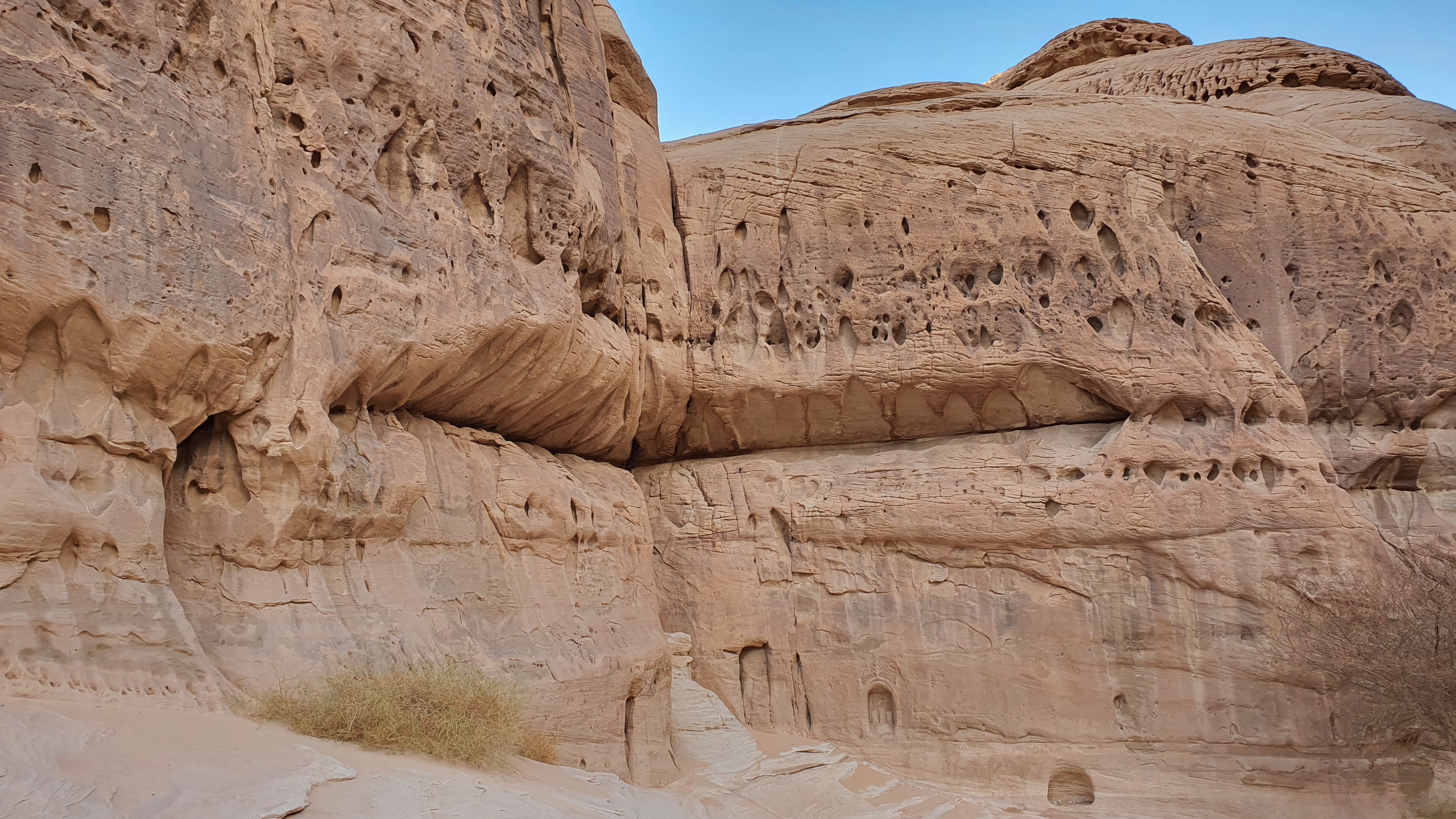
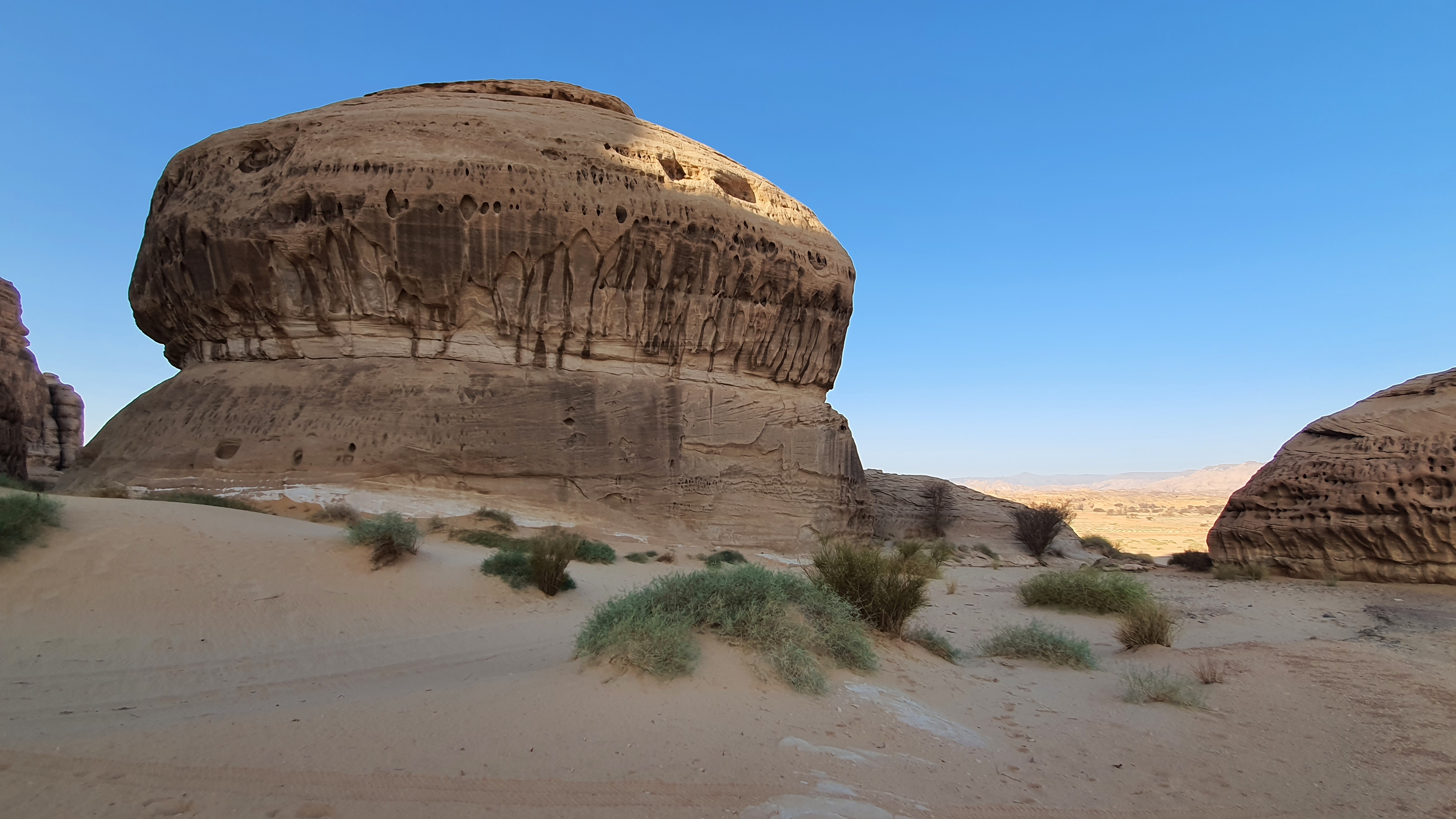
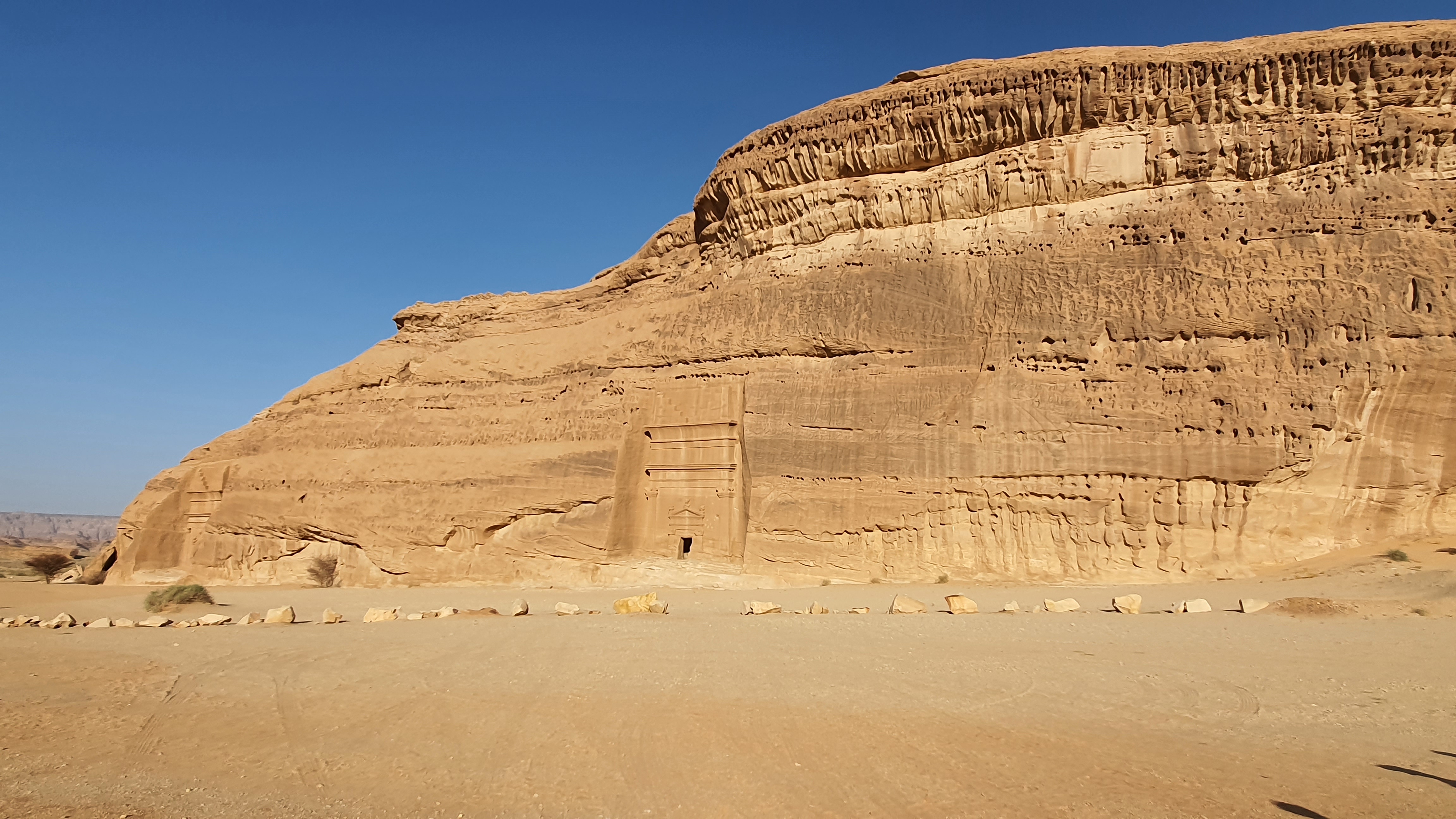

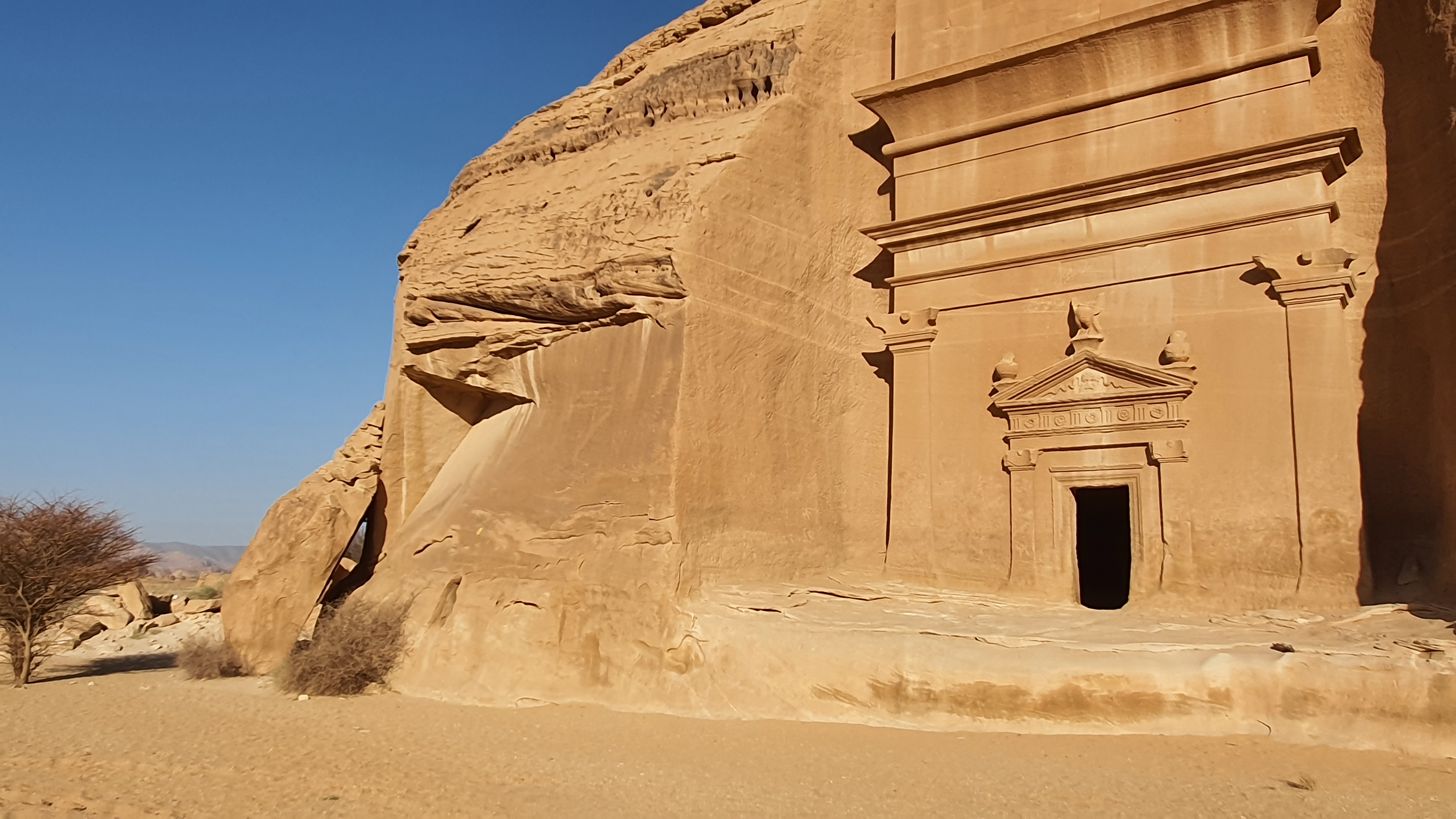


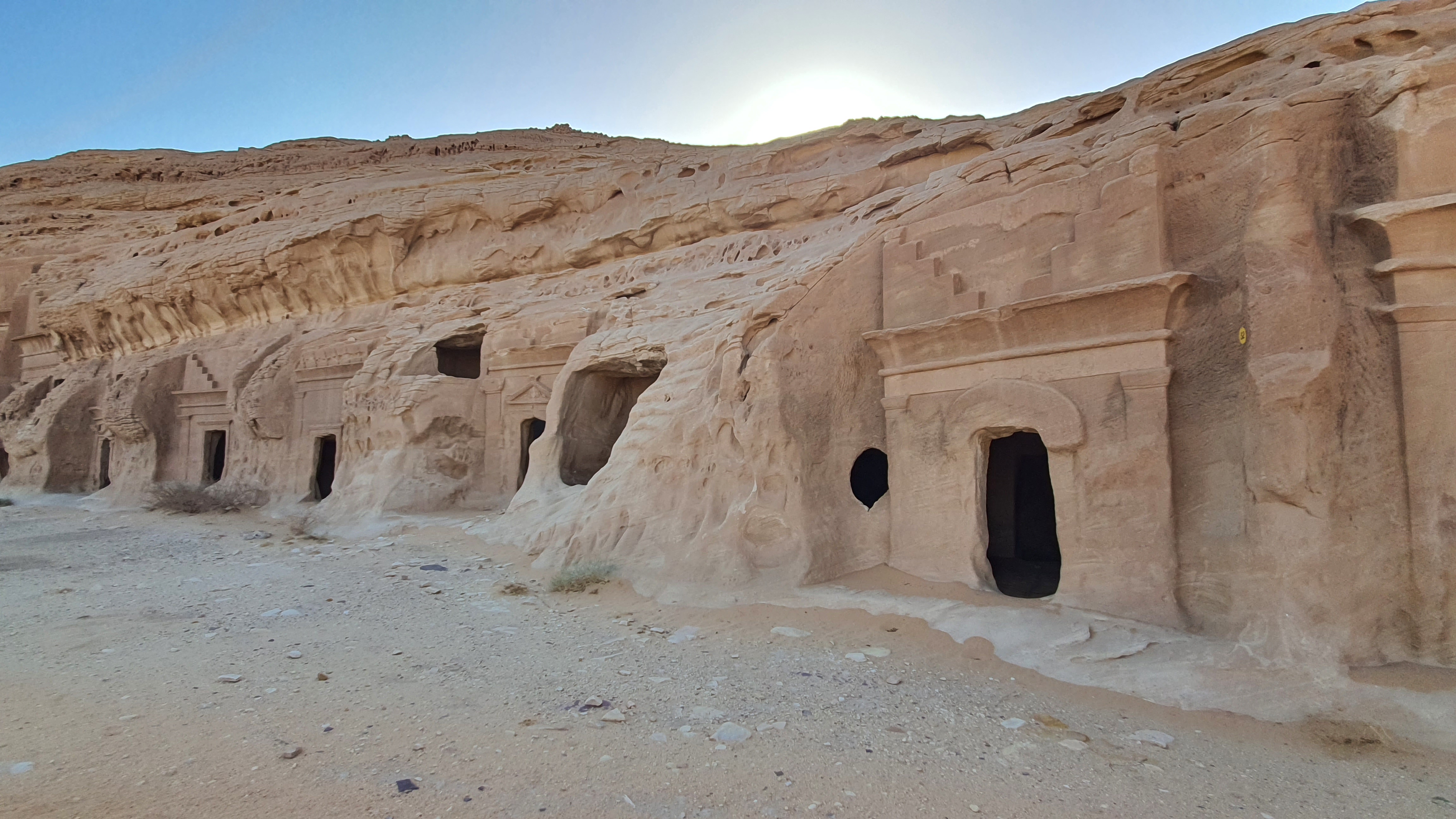
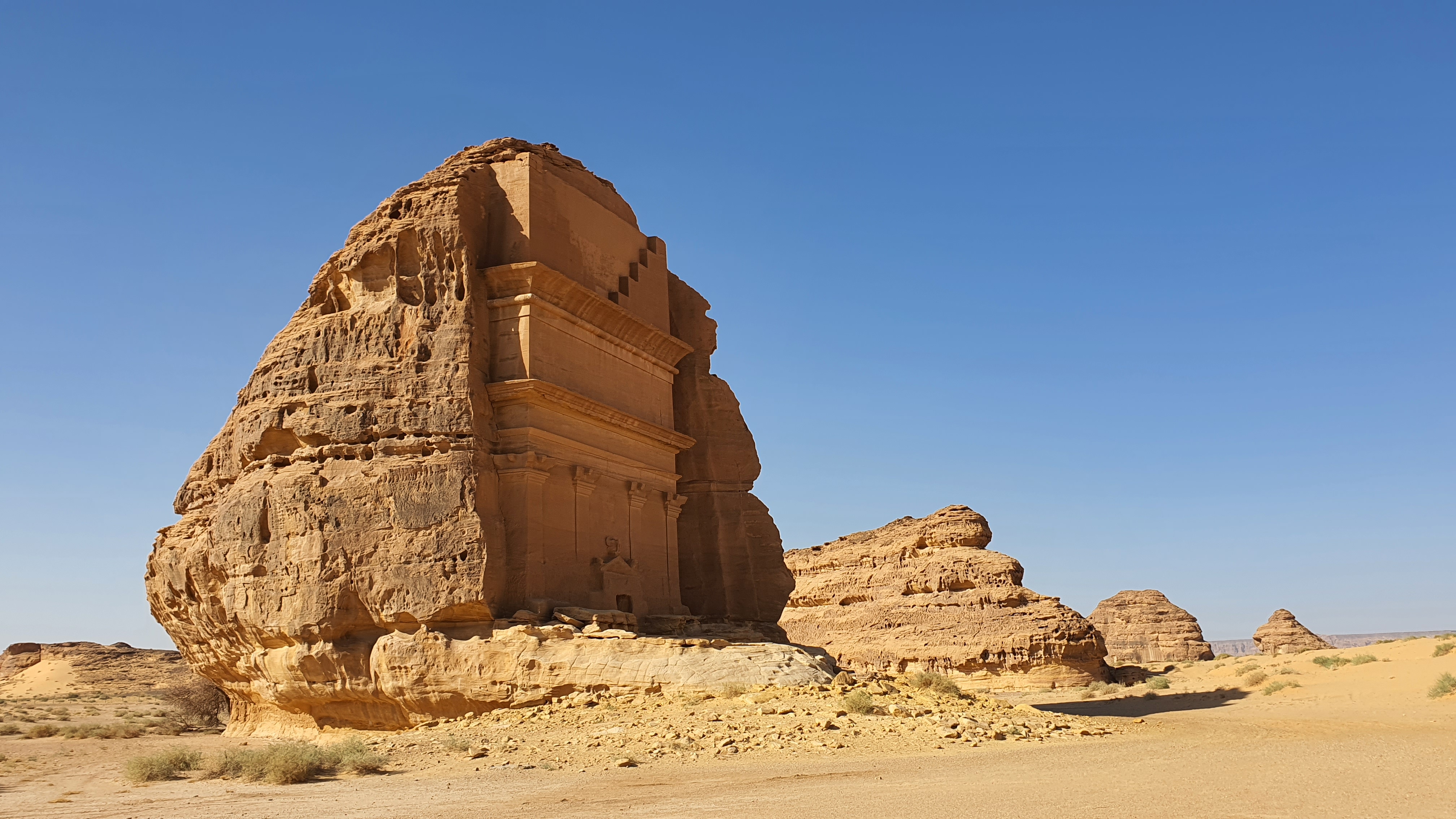 Also on the
Madain Saleh site is the Hejaz Railway Museum, where the main intermediate station
between Tabuk and Madinah was sited. The station buildings and locomotive sheds
have been restored and some original rolling stock is positioned on view.
However there is little in the way of exposition to educate the visitor on the
history and purpose of the railway. The Hejaz is however remarkable in having
no less than 3 museums within Saudi Arabia alone, the others being at Tabuk and
Madinah old stations. In addition to the museums are the abandoned stations and
trains at many other sites along the route, all left to decay in the dry desert
air since abandonment after the first world war, and many remarkably intact 100
years later.
Also on the
Madain Saleh site is the Hejaz Railway Museum, where the main intermediate station
between Tabuk and Madinah was sited. The station buildings and locomotive sheds
have been restored and some original rolling stock is positioned on view.
However there is little in the way of exposition to educate the visitor on the
history and purpose of the railway. The Hejaz is however remarkable in having
no less than 3 museums within Saudi Arabia alone, the others being at Tabuk and
Madinah old stations. In addition to the museums are the abandoned stations and
trains at many other sites along the route, all left to decay in the dry desert
air since abandonment after the first world war, and many remarkably intact 100
years later.
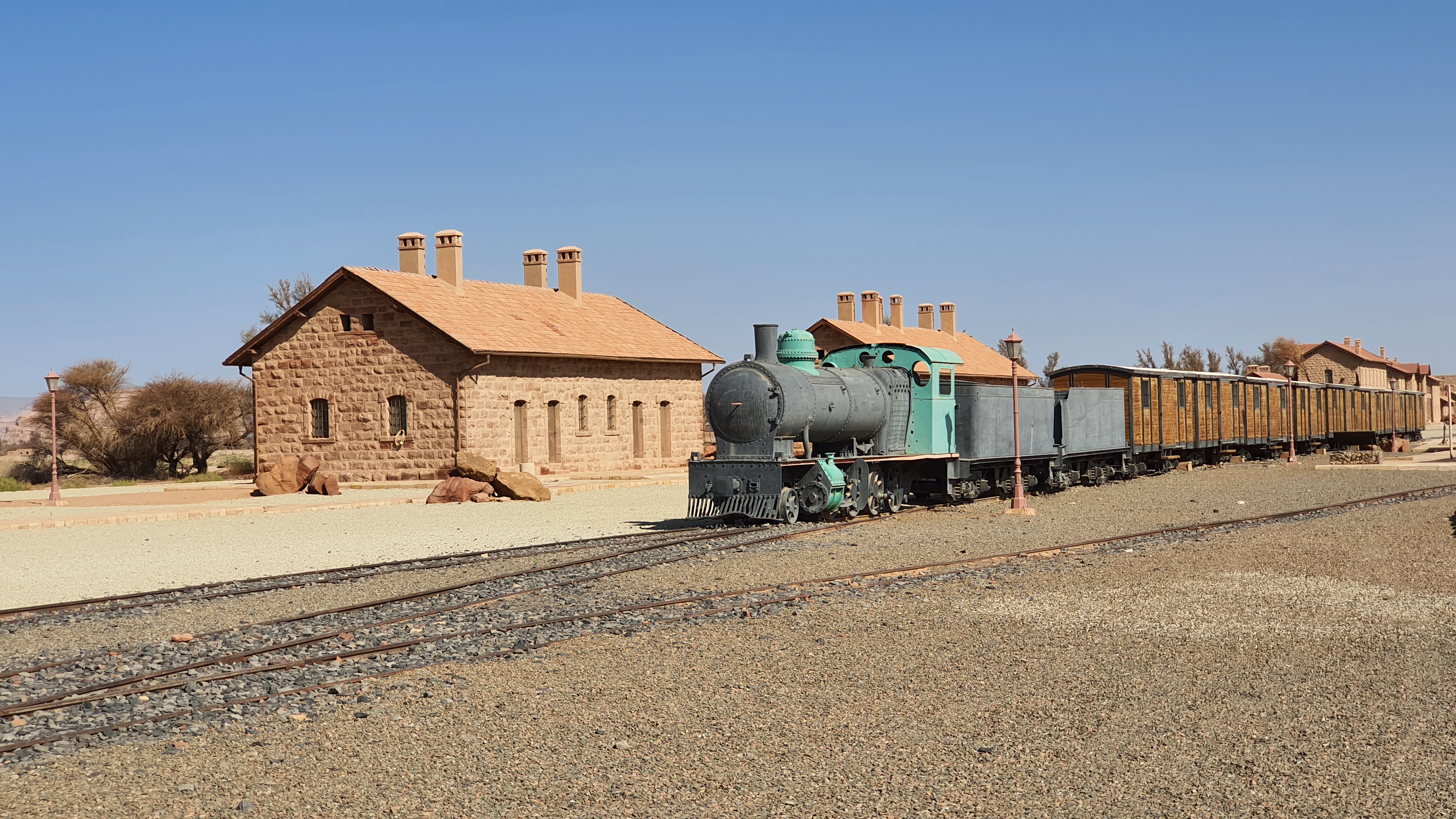
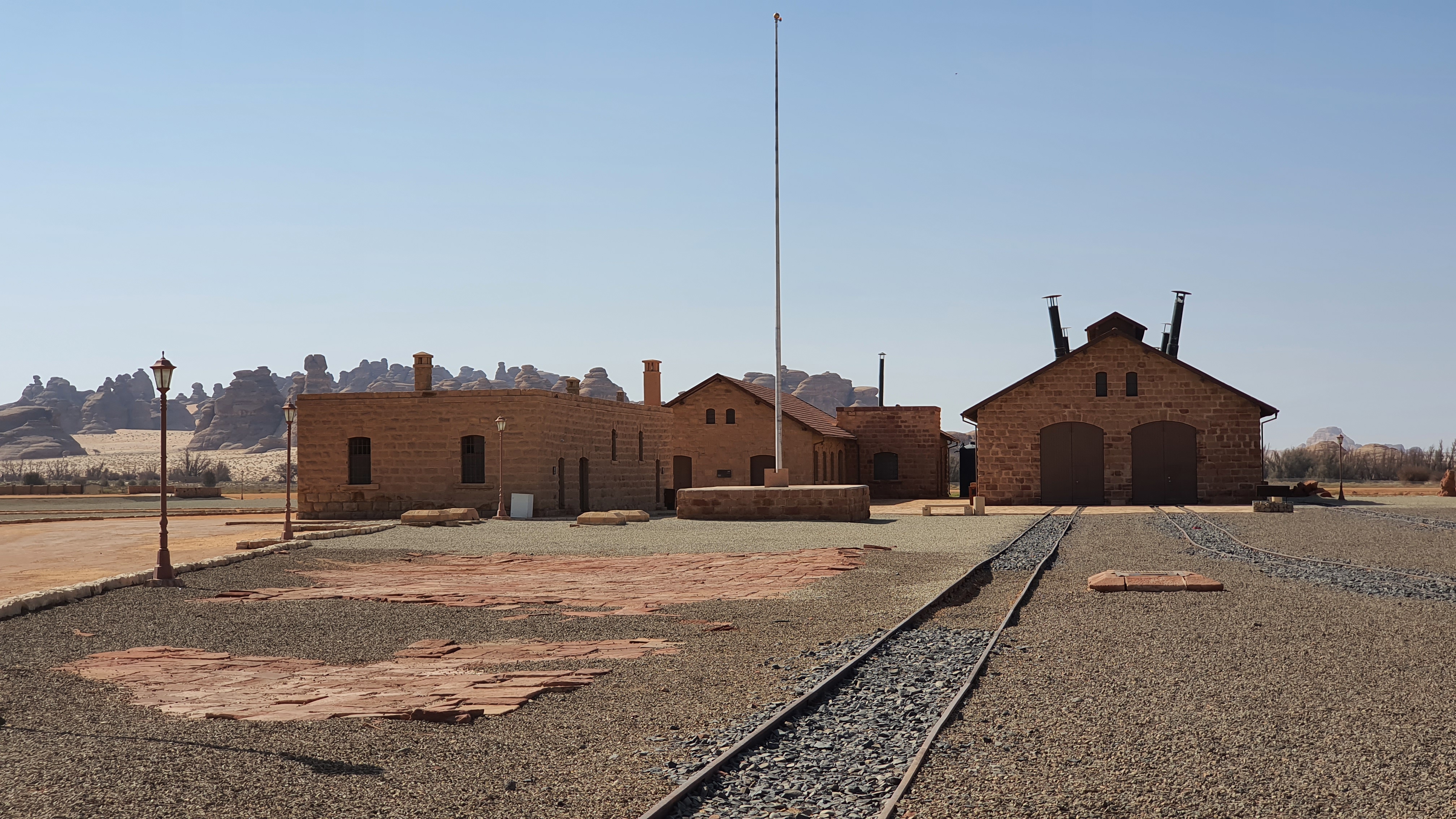 After our
visit to Madain Saleh we returned to the hotel for breakfast, and then set off
on the long journey back to Al Jouf station, via Hail. If we hadn’t had the
hire car to return, Hail station would have been much nearer, a mere 4 hours
drive away. Anyway, next morning we were back in Riyadh after a highly
interesting mini break. Tourism in Saudi Arabia is in its infancy, but it has
much to offer.
After our
visit to Madain Saleh we returned to the hotel for breakfast, and then set off
on the long journey back to Al Jouf station, via Hail. If we hadn’t had the
hire car to return, Hail station would have been much nearer, a mere 4 hours
drive away. Anyway, next morning we were back in Riyadh after a highly
interesting mini break. Tourism in Saudi Arabia is in its infancy, but it has
much to offer.
